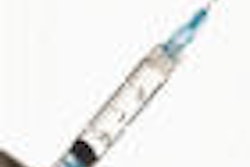Dental caries among young rural Alaska Native children are up to 4.5 times as severe as children the same age within the general U.S. population, according to a new report from the U.S. Centers for Disease Control and Prevention (CDC) and the Alaska Department of Health and Social Services.
The report is based on a 2008 investigation of child dental decay in rural Alaska. According to the report, lack of water fluoridation and soda pop consumption were two key factors associated with dental decay severity in both baby and adult teeth.
The authors also found that 4- to 5-year-old children had an average of 2.6 times more decayed and filled primary teeth in nonfluoridated villages than in fluoridated villages. Children 12 to 15 years old in nonfluoridated villages had more than double the number of decayed, missing, and filled permanent teeth than children in that age group living in fluoridated villages.
"Numerous national and international studies have documented the role of water fluoridation in reducing dental decay; however, this is the first such study conducted in Alaska ," said Brad Whistler, DMD, state oral health director and co-author of the study, in a press release announcing the report. "Optimal fluoridation of public water systems is a critical component in protecting the oral health of both young and old Alaskans alike."
The CDC investigation was requested by the department on behalf of the region, due to the extent and severity of dental decay in young native children in the area. The investigation consisted of screening 348 children ages 4 to 15 for dental decay. Parents were surveyed on factors suspected to influence decay, such as brushing teeth and drinking soda pop.
According to the report, approximately 400 children younger than 6 years of age in the study region had full mouth dental rehabilitations in 2007. Full mouth rehabilitation consists of extraction and/or restoration of multiple teeth with cavities. These procedures are typically done in hospital settings with the child under general anesthesia at an average cost of approximately $6,000 for each child. The region has about 600 births per year, so it was a significant percentage of all children in the region who experienced this treatment, Whistler said.
Dental decay studies often focus on children due to the ease of conducting dental assessments in schools; however, a review of studies that included adult dental assessment information by a health economist at CDC found water fluoridation reduced dental decay by about 27% in the adult population. Studies have also found lower Medicaid costs for dental treatment for children living in communities with optimal fluoridation of public water supplies, according to the CDC.



















